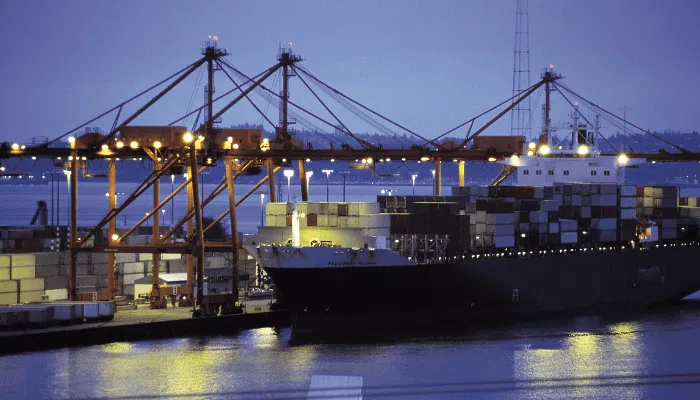The Port of Gentil, located in Gabon, is a crucial hub for West African trade and commerce. The port has a rich history and has undergone significant development in recent years to become one of the most modern ports in the region. This article will explore the history of the port, its importance for West African trade and commerce, the port infrastructure and facilities, shipping lines and routes serviced by the port, cargo handling and storage options, environmental and sustainability initiatives at the port, and future developments and expansion plans.
The Port of Gentil
The Port of Gentil is located on the west coast of Gabon, in the city of Port-Gentil. It is the largest port in the country and plays a crucial role in the economy of Gabon and the wider West African region. The port handles a wide range of cargo, including oil and gas, timber, minerals, and agricultural products.
History of the Port of Gentil
The history of the Port of Gentil dates back to the early 20th century when it was first developed as a trading post for the export of timber. In the 1950s, the port underwent significant expansion to handle the export of oil and gas, which became the dominant industries in the region. Since then, the port has undergone several phases of development to become one of the most modern and efficient ports in West Africa.
Importance of the Port of Gentil for West African trade and commerce
The Port of Gentil is a critical hub for West African trade and commerce. It provides a gateway to the wider Central African region, including Chad and Cameroon, and serves as a key transit point for goods traveling to and from Europe and Asia. The port’s strategic location, coupled with its modern infrastructure and facilities, makes it an attractive destination for shipping lines and cargo owners.
Port infrastructure and facilities
The Port of Gentil has undergone significant development in recent years, resulting in a modern and efficient port infrastructure. The port has six berths, with a total length of 1300 meters, and a depth of up to 12 meters. It also has a modern container terminal, with a capacity of up to 500,000 TEUs, and state-of-the-art cargo handling equipment, including cranes and forklifts. The port also has a dedicated terminal for the export of oil and gas, with a capacity of up to 3 million barrels per day.
Shipping lines and routes serviced by the Port of Gentil
The Port of Gentil is serviced by several shipping lines, including Maersk, MSC, CMA CGM, and PIL. These shipping lines provide regular services to and from Europe, Asia, and other parts of Africa. The port also has direct connections to several major ports in the region, including Douala and Lagos.
Cargo handling and storage options
The Port of Gentil offers a wide range of cargo handling and storage options to meet the needs of cargo owners. The port has a dedicated container terminal, which offers containerized cargo handling and storage services. It also has a general cargo terminal, which handles a wide range of non-containerized cargo, including oil and gas, timber, and minerals. The port has several warehouses and storage facilities, including refrigerated storage for perishable goods.
Environmental and sustainability initiatives at the Port of Gentil
The Port of Gentil is committed to environmental and sustainability initiatives. The port has implemented several measures to reduce its environmental impact, including the use of renewable energy sources, such as solar power, and the implementation of waste management programs. The port also has a dedicated environmental management team, which monitors and manages the port’s environmental impact.
Future developments and expansion plans
The Port of Gentil has several future developments and expansion plans in the pipeline. The port is currently undergoing a major expansion project, which will increase its capacity to handle up to 2 million TEUs per year. The port is also planning to develop a new terminal for the export of liquefied natural gas (LNG), which will further enhance its position as a key hub for the oil and gas industry in West Africa.
Image Credit: marine insight




